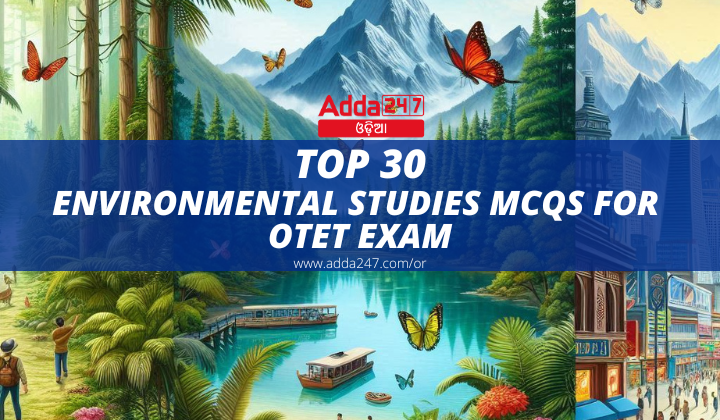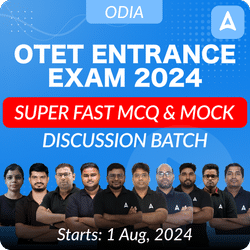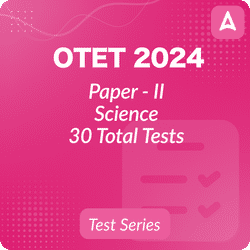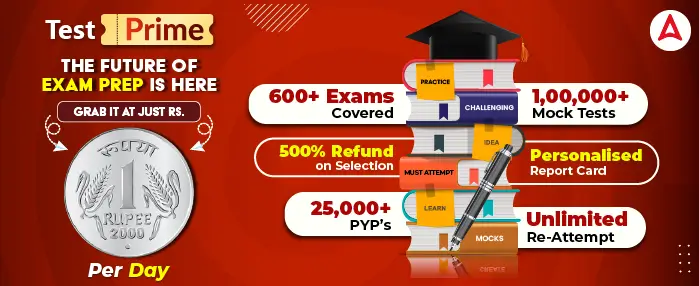The top 30 Environmental Studies MCQs for the OTET exam are tailored to help aspiring teachers grasp essential environmental concepts and issues. These questions delve into topics such as biodiversity, conservation, pollution, climate change, and sustainable development. By focusing on both theoretical knowledge and practical applications, this set of MCQs aims to equip candidates with a comprehensive understanding of environmental science, crucial for educating future generations. The carefully curated questions ensure that candidates are well-prepared to tackle the environmental studies section of the OTET exam with confidence and proficiency.
Top 30 Environmental Studies MCQS For OTET Exam
- What is a key goal of teaching EVS at the elementary level?
(a) Developing critical thinking about environmental issues
(b) Memorizing environmental laws
(c) Focusing on theoretical knowledge only
(d) Isolating science and social science concepts
Ans: (a) Developing critical thinking about environmental issues - Which concept in EVS emphasizes the interconnectedness of various environmental components?
(a) Fragmentation
(b) Holism
(c) Isolation
(d) Compartmentalization
Ans: (b) Holism - What is the purpose of integrating science and social science in EVS?
(a) To simplify the curriculum
(b) To provide a comprehensive understanding of the environment
(c) To reduce teaching time
(d) To focus on either science or social science only
Ans: (b) To provide a comprehensive understanding of the environment - Which method in EVS involves students actively collecting data from their surroundings?
(a) Lecture
(b) Survey
(c) Reading
(d) Memorization
Ans: (b) Survey - What is an objective of teaching and learning EVS?
(a) To limit knowledge to textbooks
(b) To encourage exploration and inquiry
(c) To focus on rote learning
(d) To prepare for standardized tests
Ans: (b) To encourage exploration and inquiry - Which approach is considered effective in teaching EVS?
(a) Textbook-based
(b) Lecture-based
(c) Activity-based
(d) Exam-focused
Ans: (c) Activity-based - Which principle emphasizes learning through hands-on experience in EVS?
(a) Theoretical learning
(b) Experiential learning
(c) Rote learning
(d) Passive learning
Ans: (b) Experiential learning - What is a key characteristic of a project method in EVS?
(a) Individual work only
(b) Short-term focus
(c) Collaborative and long-term
(d) Teacher-centered approach
Ans: (c) Collaborative and long-term - Which method in EVS promotes learning through observation and investigation?
(a) Direct instruction
(b) Lecture
(c) Discussion
(d) Practical work
Ans: (d) Practical work - What is the primary purpose of evaluation in EVS?
(a) To rank students
(b) To measure learning outcomes
(c) To create competition
(d) To maintain discipline
Ans: (b) To measure learning outcomes - Which body governs the local self-government in rural areas?
(a) Municipal Corporation
(b) Gram Panchayat
(c) Zila Parishad
(d) Urban Development Authority
Ans: (b) Gram Panchayat - The President of India is elected by:
(a) Direct election
(b) The Parliament alone
(c) The Parliament and the Legislative Assemblies of States
(d) The citizens of India
Ans: (c) The Parliament and the Legislative Assemblies of States - What is the primary role of the State Government in India?
(a) To manage foreign relations
(b) To implement state laws and policies
(c) To conduct national elections
(d) To maintain national defense
Ans: (b) To implement state laws and policies - What is the main function of the Central Government in India?
(a) Local administration
(b) State education
(c) National defense and foreign policy
(d) Municipal governance
Ans: (c) National defense and foreign policy - Which institution is responsible for law-making at the central level in India?
(a) State Legislative Assembly
(b) Municipal Corporation
(c) Parliament
(d) Gram Panchayat
Ans: (c) Parliament - What is the highest judicial body in India?
(a) High Court
(b) Supreme Court
(c) District Court
(d) Sessions Court
Ans: (b) Supreme Court - How many judges are there in the Supreme Court of India (excluding the Chief Justice)?
(a) 30
(b) 31
(c) 32
(d) 33
Ans: (d) 33 - What is the role of the High Court in India?
(a) Enact laws
(b) Serve as the highest appellate court in states
(c) Conduct elections
(d) Implement state policies
Ans: (b) Serve as the highest appellate court in states - Which body appoints the Chief Justice of India?
(a) Parliament
(b) Prime Minister
(c) President of India
(d) Law Commission
Ans: (c) President of India - What is the main function of the judiciary in India?
(a) Enacting laws
(b) Interpreting and enforcing laws
(c) Conducting elections
(d) Implementing policies
Ans: (b) Interpreting and enforcing laws - Which mountain range forms the northern boundary of India?
(a) Western Ghats
(b) Eastern Ghats
(c) Himalayas
(d) Aravalli Range
Ans: (c) Himalayas - The Chilika Lake, the largest coastal lagoon in India, is located in which state?
(a) West Bengal
(b) Tamil Nadu
(c) Odisha
(d) Andhra Pradesh
Ans: (c) OdishaWho is known as the “Father of the Indian National Movement”?
(a) Jawaharlal Nehru
(b) Bal Gangadhar Tilak
(c) Mahatma Gandhi
(d) Subhas Chandra Bose
Ans: (c) Mahatma Gandhi - Which movement in Odisha was led by Gopabandhu Das?
(a) Non-cooperation Movement
(b) Salt Satyagraha
(c) Quit India Movement
(d) Civil Disobedience Movement
Ans: (a) Non-cooperation Movement - What is the highest peak in Odisha?
(a) Mahendragiri
(b) Deomali
(c) Malayagiri
(d) Gandhamardan
Ans: (b) Deomali - Which river is known as the lifeline of Odisha?
(a) Ganga
(b) Yamuna
(c) Mahanadi
(d) Brahmaputra
Ans: (c) Mahanadi - Which region in India is known as the ‘Silicon Valley of India’?
(a) Mumbai
(b) Hyderabad
(c) Bengaluru
(d) Pune
Ans: (c) Bengaluru - What is the climate type of Odisha?
(a) Tropical monsoon
(b) Arid
(c) Mediterranean
(d) Temperate
Ans: (a) Tropical monsoon - Which mineral is abundantly found in Odisha?
(a) Gold
(b) Bauxite
(c) Mica
(d) Limestone
Ans: (b) Bauxite - What is the primary source of irrigation in Odisha?
(a) Canals
(b) Wells
(c) Rivers
(d) Rainwater harvesting
Ans: (a) Canals - Which region in India is known for its rich biodiversity and dense forests?
(a) Western Ghats
(b) Thar Desert
(c) Indo-Gangetic Plain
(d) Deccan Plateau
Ans: (a) Western Ghats










